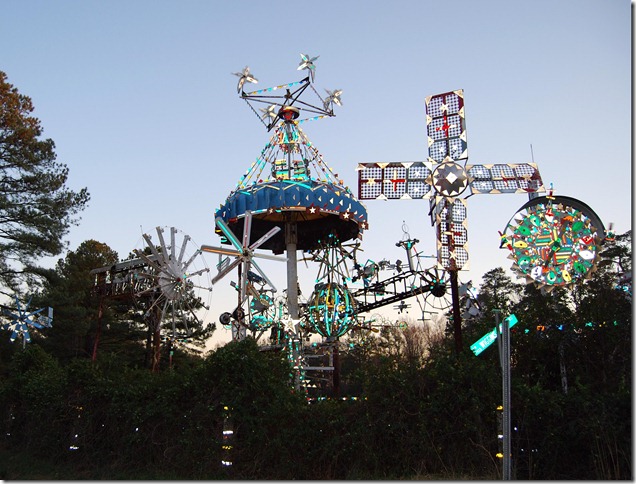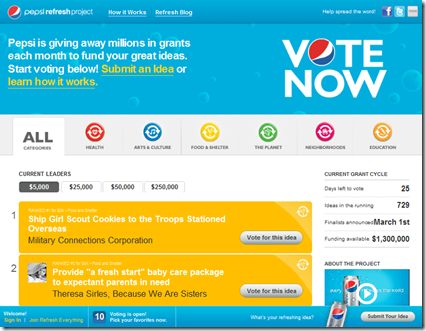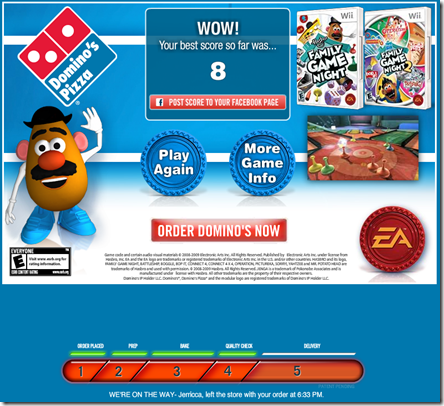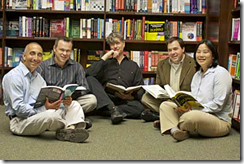Every year, I join so many others in hoping for TV advertising greatness during the Superbowl. Here’s my assessment, in chronological order.

Snickers backyard football game. Watching Betty White get tackled into the mud, and come up talking smack was laugh-out-loud. This was a terrific realization of the oft-used metaphorical insults men use to criticize each other’s weak play (short putts = Alice). There were a lot of insightful and funny takes on gender roles tonight. Abe Vigoda toward the end was icing on a very entertaining cake. The Snickers connection was just a little loose and forgettable, though.
Pam and Tim Tebow. I’m happy to see this effort to encourage people to bravely protect their unborn children. Apparently, the editing negotiation with CBS made the message fairly vague, and relegated the substance to the web landing site. On the creative approach: unfortunately, the surprising tackle of Mom immediately followed the funnier Snickers spot. It wasn’t an imitation of course, but this is the impression the viewers got because of CBS’s scheduling.
BoostMobile using the 1985 Chicago Bears to reprise their Superbowl Shuffle. Worst production value I’ve ever seen on a Superbowl ad. I’ve never heard of BoostMobile, and will actively avoid buying from them.
Coke. The evil Simpsons boss, Montgomery Burns, is down and out, due to material loss. Other characters are happy with their simple lives (involving Coke). Redemption comes when he accepts the offer of a Coke, from one of these peasants that he normally oppresses. Clever, watchable. Great brand positioning and registration.
Small animals. The number of ads with varmints was notable. None make this review list, although I did like the fiddling beaver spot for a job board.
Go Daddy. As usual, we are beset by this company’s low-brow approach. Danika Patrick gets a massage from a hopeful Go Daddy Girl, who nearly demonstrates her physical qualifications. Cut to the web call to action teaser. So typical. I realize it’s tongue in cheek, but they are unrepentantly trying to get men to act on their basest instincts in order to sell web domains. I refuse to buy from them because of this.
Bud Light Autotune. Novel and funny. Kept me engaed. T-Pain punchline. See also baby autotune.
Killer whale in truck. Mad drive to expel it into the water. Results of bachelor party. The spot kept my attention easily, but the Bridgestone brand connection was very thin.
Budweiser bridge out emergency. Aaron Copeland score. Human bridge. Terrific, engaging. Shows motivation and dedication, and connects to American identity. Perfect for Budweiser.
In the second tragic instance of an ad following another with the same gags, Dockers’ “I wear no pants” spot looked like an imitator of Careerbuilder’s casual Friday ad, where a man is bugged by his coworkers’ interpretation of casual dress.
Hyundai. Brett Favre 2020 MVP older than everyone. I think this was a bet that Brett would be in the game. Lesson learned. Also, no brand connection.
Dove Men+Care. This was an insightful profile of the life and growth of males. They’ll earn consideration from sensitive men who appreciate that the Dove brand gets them. This is a fitting follow-on to Dove’s ground breaking Campaign for Real Beauty which authentically rejected unobtainable female beauty expectations. Although (forgive me for lack of PC here, but I’ve seen the stats) I wonder whether the men pictured really have anything to do with household soap choice. But intriguingly, my 11 year older daughter just commented that I’ve “got to get Dove.”
Dodge Charger. Men recalling silently and stoically their many pledges to do the “right” things in the eyes of their significant other. Last refuge: Dodge Charger. Excellent appeal to men’s ego.
In at least the third appeal to male’s fear of emasculation at the hands of a spouse or girlfriend, FloTV offers sports in the hand to counter spine removal. Money line: “change out of that skirt.”
Intel. Robot hurt by effusive lunchroom comments about the latest chip being Intel’s greatest achievement. This spot demonstrates that the PC industry continues to believe that people think more about enabling technology than they do. I think Intel’s current campaign aims above the target.
The Who halftime show. Hard to see them struggling against the the effects of age. Pete’s tummy jiggling during full-arm slashing was disconcerting. But I still loved it.
VW. Clever reference to childhood Punch-bug game of identifying Beetles. Message received: same company that make Beetle, they’re fun, they make a lot of other cars. I liked it. I think it will remind people to consider VW for their next purchase.
Lance Armstrong for Michelob ultra. Standard. It’s fine, but shouldn’t try to compete for attention during the Superbowl, when the bar is higher.
KGB. Apparently, this company is well-funded enough to try again. As an angry sumo threatens, two ninety six pound weaklings race to search for the Japanese for “I surrender.” KGB user escapes the squish. Funny. I think people will find KGB with Google (and wonder why they should pay for search).
Coke. A sleepwalker on safari barely escapes many life threatening dangers. Very entertaining. Bolero accompaniment. Coke has developed a beautiful sense of style and storytelling that really draws a person in.
E*Trade babies talking on web video connection. This series is still working, but I prefer the “golden pipes” spot. There were three E*Trade baby ads tonight. None of these were the apex of the campaign, and they need to register the brand better.
Google. GOOGLE?! A TV AD!? Congratulations to Andy Berndt and Lorraine Twohill for expressing EXACTLY why Google is great. The spot shows a series of searches and other lesser known related functionality, as a cross-continent romance buds and blossoms. You only see the simple web interface close up, and hear some overlays of voices of people involved and some contextual sounds of their relationship. The final stroke is a search on how to assemble a crib (after marriage). The spot reminds people of the truly transformative power that search has brought to us all. Somehow, it says 1) Google is simple, 2) Google brings people together, 3) Google helps you learn, 4) Google enables new experiences, 5) Google has great features you haven’t discovered yet, 6) Google opens up the world, and 7) Google has a heart, without losing its unified message. And it made a simple text box wonderfully emotional. Very, very well done!
Sorrento. Sock monkey and other characters. Pretty weird. Might have been good, but I was too excited by the Google ad to engage.
Miller High Life. Small business owners position the brand as the beer for the everyperson. I like this approach for them, which they’ve been on for at least three years. It is tough to differentiate a macrobrew, and I think they’re onto something.
Pop Secret + Emerald Nuts. Awesome plus awesome = awesomer. Completely weird depiction of people-as-trained-dolphins performing for snacks. This actually might be the only way I can think of to bring these dull snacks to people’s awareness. Kudos for at least rolling the dice.
Two Denny’s ads, emphasizing the volume of eggs that will be sold by featuring chickens screaming. High point: 2001 A Space Odyssey reference as a chicken screaming in space makes no sound. Low points: everything else. At least I know there is a hot deal coming at Denny’s.
Audi A3 Turbo Diesel. Hilariously apt “green police” (with matching Dream Police music) exaggeration of eco-correctness gone too far. Loved it, and want the car. I’ve been eyeing a VW Jetta TDI, but this makes me want to upgrade.
Doritos. Guys in gym steal Tim’s Doritos and pay the price. Strange is sometimes good. I’ll remember that one, and associate Doritos with desire.
Bud Light. Book club. Man stays for women’s book club discussion of a relationship book after discovering Bud Light will be served. It works.
The winner: Google.

I have no idea what happened in the game. Something about a comeback. You?
![IMG_0520[1] IMG_0520[1]](https://merrigan.files.wordpress.com/2011/05/img_05201_thumb.jpg?w=644&h=482)

























